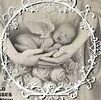
Baby clothing, also called infant clothing, is clothing for infants. Like adults, infants’ fashions are a form of social-cultural consumerism. They encode many different social features, including social class, ethnicity, and gender. The clothing of infants is also a symbol of class and social inequality.
One of the most common pieces of baby clothing is the onesie. Most stores refer to these garments as bodysuits, but Gerber actually owns the trademark on the word “onesie.” A onesie zips up at the crotch, and keeps the baby warm. Onesies with long sleeves are also helpful for keeping a baby’s arms warm.
Size is also an important consideration for parents. Babies can grow rapidly and will often fit into more than one size at a time. For this reason, it’s important to purchase clothes in the correct size. While newborn clothes fit for a few weeks, larger babies will need 0-3 months clothing. If a baby doesn’t fit into the newborn size, parents can roll up the pants or sleeves to make them fit.
Baby clothing comes in a wide variety of styles, colors, and materials. One-piece sets are popular, and parents should stock up on several of them for their growing baby. One-pieces can be worn over again, and are also good for the first few months of baby’s life. However, they should not be worn as frequently as a regular outfit.
The most important piece of baby clothing is the one that keeps the baby warm and comfortable. Whether your baby spends a lot of time outdoors or stays indoors, he or she will want to wear warm, comfortable clothing. Wintertime requires layers, including zip-up down snowsuits. Baby socks are essential for keeping baby’s feet warm and toasty.
Newborns grow rapidly, so it’s important to choose clothes that are easy to wash and take care of. Jumpsuits and tops with envelope necks are great options. Zippers will make dressing your baby quick and easy. Cotton clothes are also the most comfortable and gentle on the sensitive skin of your little one.
Sizes are another important factor. Newborns typically wear newborn size clothing, while babies over three months usually move up to 3-6 months or six months. However, some babies are smaller than their age and wear larger than the size indicated on the tag. You should be prepared to wash these clothes frequently. If you need more than one pair of baby clothes, consider buying more.
New parents often buy baby clothes based on the age of the baby. However, weight and height don’t always correlate, so it is wise to buy extra outfits for the next six months. This way, you can save money on buying the right size as your baby grows.
